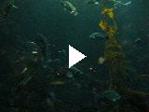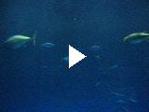When I entered the Central Valley yesterday, I stopped by a field where tomatoes were being picked (mostly by Mexicans or Mexican-Americans). I talked with a man watching the field from his pickup, and, after getting directions, learned that this was his field of tomatoes. I then asked him what he thought of global warming.
I expected his answer, but not the emphasis with which he gave it. “It’s entirely made up—there isn’t a single bit of evidence to show it will happen…I guarantee it won’t happen in my lifetime or in your lifetime.” It was clear that I had touched some type of nerve, and the anger seemed somehow directed at environmentalists. He said environmentalists were just out to hurt the economy and that the ‘liberal science’ was fictitous. I knew I could not convince him, so I listened, tried to briefly and respectfully disagree, and thanked him for directions.
It was sad to me to see that the dialog between environmentalists and farmers (or at least this farmer) is so poor. Environmentalists and farmers should be working together on problems, not in opposition to each other.
A Conversation with a Farmer
November 10th, 2005 by DavidMonterey to Fresno – 3 days, 190 miles
November 10th, 2005 by David‘You’re going to Fresno?’ was the common response to this travel decision. Climate change, however, is going to be bad for the central valley, and so I decided to bike east.
I left Monterey in the afternoon on Tuesday, and rode 30 miles to the Salinas Valley by nightfall. Sneaking behind a strawberry field, I cleared some ground space, pitched my tent, and cooked dinner. I had planned to ride early the next morning, but I heard rainfall on the tent as my alarm rang, and I rolled back to sleep for a few hours.
The flat and heavily farmed Salinas valley has steep mountain walls on either side, and I exited the valley by a rarely traveled dirt road over a 2000+ ft pass. Beyond the top of the pass, rolling hills with sparse oaks and grazing cattle lined the road (horses also, as shown in the picture). Cold, intermittent rain persisted, and I found myself frequently stopping to put on or take off rain gear.
As night fell, I noticed that I could continue to bike because the once-a-half-hour car was infrequent enough for me to get off the road each time. By moonlight, I road to the Panoche Valley, stopped at the one store (a bar, where I talked with a Chilean rancher in Spanish and ate a sandwich), and then pitched my tent just out of view of the road. At the bar, the owner told me that in the 70’s, the Panoche valley had been farmed, but that they ran out of water and now the tree-less valley is covered with only dry grass.
Today I rode 90 miles across the central valley and Fresno county. Fresno county is the most economically productive agricultural region in the world, and I passed almond orchards, grape vines, tomato fields, cotton fields, and others. A tail wind pushed me east, and a few heavy rains added to the journey. In Fresno, I stopped by a local high school and got a teacher enthused about my project, only to learn school is closed tomorrow because of veterans day. Nonetheless, I found a bed to sleep in at the house of a friend of a friend, where a well cooked dinner awaited.
Pacific Grove High
November 8th, 2005 by DavidI visited Pacific Grove High on the Monterey peninsula and talked with Ms. Long’s earth sciences class before leaving town at noon. The school sits on a hill well above the ocean, and it was tiring to ride up from the research station to the school. Pacific Grove High had a student run news service, which all the students watched at the beginning of the period (it was somehow broadcast to the television in the room).
A Day in Monterey
November 7th, 2005 by DavidI spent all Monday at the Stanford marine research station in Monterey, talking with scientists about their research. Most life in the ocean is limited by the amount of nutrients in the water (mostly nitrogen and phosphorus), but most nutrients are found deep in the ocean where there is no light and plants can’t survive. The most productive locations are where ocean currents push deep water to the surface, brining nutrients to plants. Monterey Bay is one of these places, and the waters outside the marine station were filled with noises of seals, sea birds, and otters.
There are signs that this bay has already changed due to a changing climate. A survey of the bay in the 1930’s and then again in the 1990s show that the species living in the bay changed. Between those time periods, a majority of species that are usually found in southern waters increased in abundance, while species that are usually found in northern waters decreased in abundance, suggesting that as the earth has warmed over the past century, the ecosystem has changed.
I talked with Dr. George Somero (the one holding the fake fish in the picture), who studies the effect of heat stress on marine organisms. His research has shown that many of the creatures living in tide pools are living near their the upper limit in temperature, and a small increase in summer temperature will likely kill many of the species in bay, allowing others to take their place. As shown by the study I referenced in the previous paragraph, most animals have evolved to live in a certain climate. When we change the climate in the next 100 years, as we are doing, the plants and animals can’t evolve—many will need to move or die, and ecosystems will dramatically change.
I also enjoyed talking with Luke Hunt, a PhD student at the station studying a form of seaweed that clings to rocks in the tidal zone. Using historical photos, Luke has been able to see how the seaweed moves on the rocks between decades. He has found that it is remarkably stable, but that there was a significant jump a few decades ago because the sea level has risen very slowly over this period. Luke told me that “even though the climate changes slowly, the ecosystems response may be sudden.” My favorite part about meeting with Luke, though, was that he lives on a small boat in Monterey harbor. For dinner, he and his wife shared with me feast of beans and quesadillas from the living room/kitchen/dining room (it’s only one room) of the boat.
I received a tour of the Stanford marine station (as well as a couch to sleep that night) from graduate student Tom Oliver. Tom walked around (I made him pose as if explaining something in the below picture), and even took me to the Monterey Bay Aquarium. The movie to the left shows the kelp forest that is found in the bay, as well as the impressive diversity of species. Also, look how big tunas are! They’re big!
As all of this above research has shown, Monterey Bay will change, likely significantly, under climate change, but it the life itself will not collapse (although biodiversity may decrease). This is not the case for coral reefs, which are in huge trouble from both an increase in temperatures and an increase in acidity from higher carbon dioxide levels. Tom, my guide, studies reef genetics, and has been able to say which reefs are more likely to die off because of climate change. I will tell you more about reefs and climate change later, though, when I visit one on my way through Panama. Stay tuned!
Palo Alto to Monterey – 2 days, 94 miles
November 6th, 2005 by DavidAfter a well attended party Friday night, a late night reorganizing gear, and a morning cleaning the last items out of my old house, the trip began. Seven friends joined me for the first section of the ride, a trip from Palo Alto up highway 9 to skyline drive.
We biked foothill expressway, and then cut through neighborhoods of multimillion dollar houses likely financed by silicon valley technology stocks. We climbed highway 9, and two thousand vertical feet later all friends except Heather said their final goodbyes and rode back to Bay Area.
Riding south on skyline, Heather and I rolled up and down along the ridge with views of the ocean and Santa Cruz mountains below to the right and views of the San Jose and the Bay Area below to the left. We camped in a redwood forest and two of my (former) housemates, Mike and Teresa drove to join us.
The second day of travel took us through the coastal towns just north of Monterey. We passed by fields of strawberries, artichokes, and other high-valued crops. Following a bike path along the ocean for the final 10 miles, we arrived in Monterey at sunset. In Monterey, friends of Heather’s enjoyed diner with us and let us crash at their place.






